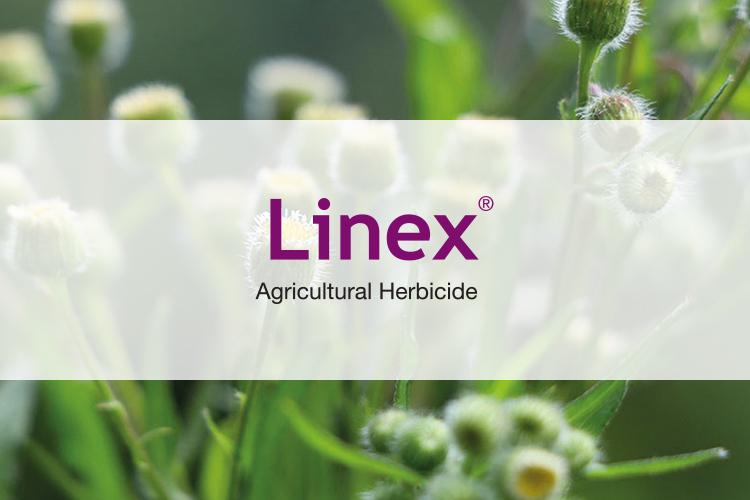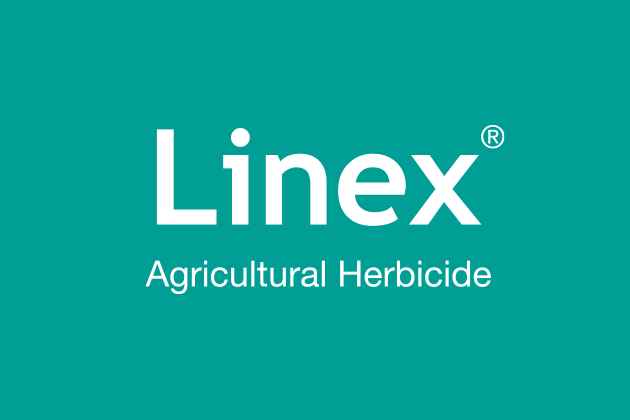Use Group 7 Linex® for Waterhemp Control in Soybeans

An Effective Tool for Controlling Waterhemp in Soybeans
Waterhemp is one of the most devastating weeds affecting soybean yields in the U.S. today.
This broadleaf summer annual emerges throughout the growing season, outlasting many pre-emergent herbicides.
Even non-residual post-emergent herbicides may miss late breaking weeds.
When an infestation reaches or exceeds 20 weeds per square foot, especially late in the season, the consequences can be catastrophic — reducing yields by up to 44 percent. Waterhemp that emerges as late as the V5 stage can in soybeans can cut yields by up to 10 percent.1
Waterhemp has demonstrated resistance to six different herbicide groups, including: Group 2, Group 4, Group 5, Group 9, Group 14 and Group 27. And resistance to multiple herbicide groups in some plant populations is now occurring in many states.
Waterhemp grows quickly and competes for sunlight and nutrients while producing an unusually high number of seeds per plant — from 250,000 to 1 million seeds under optimal conditions.2
Linex® 4L — An Alternative Mode of Action with Late-season Success for Control of Waterhemp
- Linex4L is a Group 7 herbicide.
- LINEX 4L is effective on waterhemp and other important weeds, where rotating chemistry is an effective way to combat resistance.
- LINEX 4L is less soluble than many herbicides, which enables it to control weeds, like waterhemp, that emerge later in the season.
- The insolubility of LINEX 4L enables it to retain effectiveness in areas of heavy rainfall.
- LINEX 4L is an effective pre-emergent tool in the battle to control waterhemp. Pre-emergence programs have been found to be more effective in maximizing yields and return on investment than post-emergence programs.
- University and consultant studies have shown LINEX 4L to provide waterhemp control ranging between fair and excellent, depending upon soil type, rate of application and weed pressure.
- As the percentage of organic matter in the soil increases, the rate of LINEX 4L applications needs to increase to maintain efficacy. Do not exceed 2 pints per acre of LINEX 4L in any application.
| PRE Followed by POST on Glyphosate-tolerant Soybeans | ||
| Situation | Recommendation | |
| To provide added residual activity or burndown activity on emerged weeds, preemergence applications of LINEX 4L may be tank mixed with full or reduced rates of other products registered for use in soybeans. | Preemergence | Postemergence |
|
LINEX 4L 1.0-2.0 pint / Acre Rate per acre depends upon:
|
Glyphosate-tolerant soybean varieties. Your favorite glyphosate-based POST program. |
|
| Application Information | ||
|
||
| Weeds Controlled Pre-emergence | ||
| Broadleaf Weeds | Grasses | LINEX 4L will provide partial control (suppression) of the following hard to control weeds |
| Amaranth, Palmer (Amaranthus palmeri) Carpetweed (Mollugo verrticillata) Chickweed, Common (Stellaria media) Dog Fennel (Mayweed Chamomile) (Anthemis cotula) Galinsoga (Galinsoga sp.) Nettleleaf Goosefoot (Chenopodium murale) Lambsquarters (Chenopodium album.) Mustard, Tumble (Sisymbrium altissimum) Mustard, Blue (Chorispora tenella) Mustard, Wallflower (Treacle) (Erysimum cheiranthoides) Pigweed, Prostrate (Amaranthus blitoides) Pigweed, Redroot (Amaranthus retroflexus) Pigweed, Smooth (Amaranthus hybridus) Prickley Lettuce (Lactuca serriola) Purslane, Common (Portulaca oleracea) Radish, Wild (Raphanus raphanistrum) Ragweed, Common (Ambrosia artemisiifolia) Shepherd’s-purse (Capsella bursa-pastoris) Smartweed, Pennsylvania (Polygonum pennsylvanicum) Tansymustard, Pinnate (Descurainia pinnata) Waterhemp, Common (Amaranthus rudis) Waterhemp (Amarathus tuberculatis) |
Barnyardgrass (Watergrass) (Echinochloa crus-galli) Canarygrass (Phalaris canariensis ) Large Crabgrass (Digitaria sanguinalis) Green Foxtail (Setaria viridis) Yellow Foxtail (Setaria glauca) Goosegrass (Eleusine indica) Fall Panicum (Panicum dichotomiflorum) |
Annual Morningglories only See Ipomoae spp. Entire Leaf Morningglory (Ipomoae hederacea integriuscula) Ivy Leaf Morningglory (Ipomoae hederacea) Pitted Morningglory (Ipomoae ipola & I. lacunose) Cocklebur, Common (Xanthium strumarium) Dayflower, Common (Asiatic) (Commelina communis) Eastern Black Nightshade (Solanum ptychanthum) Florida Beggarweed (Desmodium tortuosum) Florida Pusley (Florida Purslane) (Richardia scabra) Giant Foxtail (Setaria faberi) Prickly Sida (Teaweed, Sida spinosa) Ragweed, Giant (Ambrosia trifidia) Sicklepod Cassia obtusifolia Smooth Crabgrass (Digitaria ischaemum) Velvetleaf (Buttonweed) (Abutilon theophrasti) Waterhemp, Common (Amaranthus rudis) |
Always read and follow label instructions.
Footnotes
1 Waterhemp Management in Soybeans,” available at TakeActionOnWeeds.com
2 Waterhemp Management in Soybeans,” available at TakeActionOnWeeds.com


